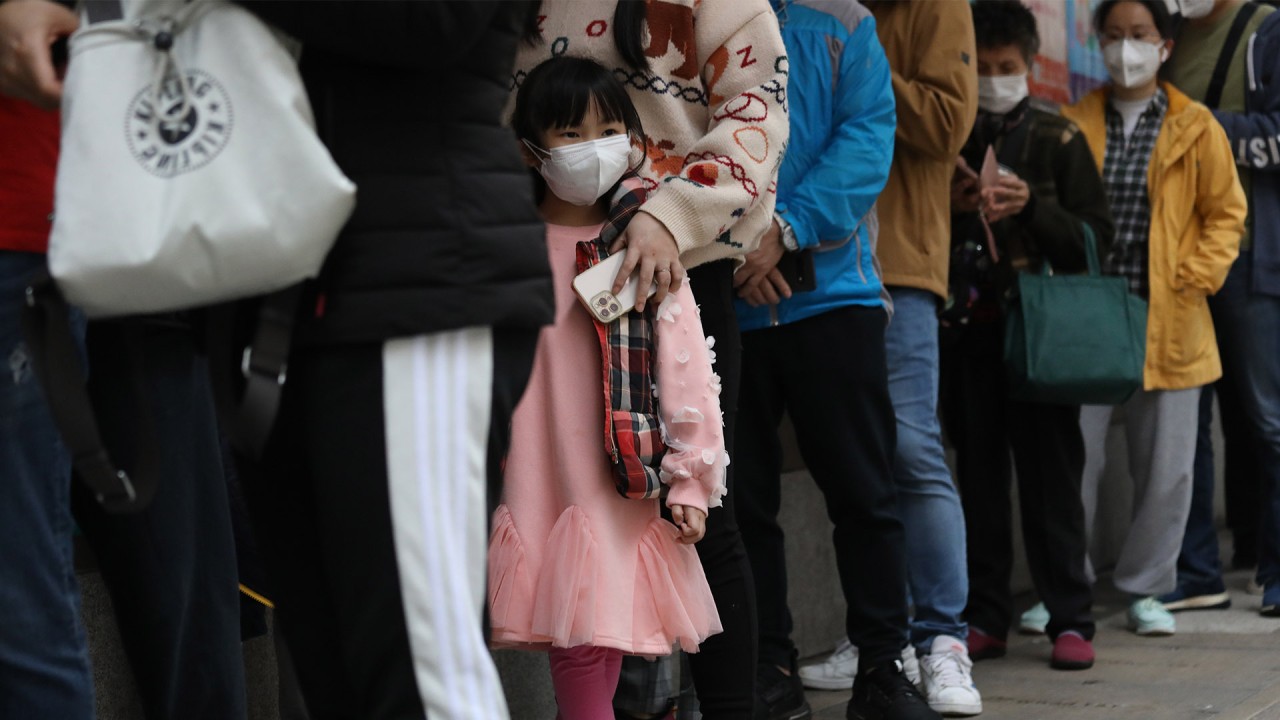
Lessons for Hong Kong and the US in new study on child mental health during the Covid-19 pandemic
- A recently published study examines how socioeconomic factors and vaccination roll-out have affected children’s mental health during the pandemic
- It reveals an urgent need to remove barriers to food security, mental health services, and housing and employment benefits
We found that Covid-related stress, worry and sadness occurred when children experienced pandemic-related food insecurity, parental unemployment, disrupted mental health treatment and healthcare services, or if they lived in neighbourhoods with a higher percentage of adults who worked full-time, or lived in states lagging behind in vaccination rates over the study period.
Levels of stress were higher still among children who were older, female, Hispanic, had parents who were separated, experienced interruptions to healthcare, and lived in economically deprived neighbourhoods or in areas where many adults were essential workers (for example, cleaners, security guards or health workers) and unable to social distance.
Crucially, however, our study found that stress brought on by the pandemic declined in children after vaccinations were rolled out for adults in December 2020.
Understanding the factors that increase – or lessen – pandemic-related stress is urgently important to developing effective policies to mitigate such disparities.

There are many takeaways for US policymakers. To reduce food insecurity and its adverse effects on mental health, the government should consider improving nutritional assistance programmes, expanding unemployment insurance and housing subsidies, extending eviction moratoriums, and increasing the minimum wage.
Meanwhile, expanding health insurance coverage, minimising out-of-pocket medical expenses, supporting behavioural health facilities, improving value-based care, and expanding telehealth access may reduce pandemic-related disruptions to healthcare and help to bridge the health gap between rich and poor.
To further address underlying biases, the government should do more to meet the needs of under-resourced communities, minority group households, and parents who are essential workers. Basic provisions such as paid sick leave, expanded insurance coverage, employment protection, financial assistance, and rent stabilisation should be considered, along with childcare resources and direct food assistance.
The relationship between vaccine availability and child mental health must also not be overlooked. It suggests that vaccines not only save lives but provide peace of mind.
Understanding the structural factors related to poor mental health in children during the pandemic is vital. They reveal an urgent need to remove deeply entrenched barriers to food security, mental health services, and housing and employment benefits.
These revelations provide key lessons for policy development in Hong Kong. Here, too, children from low-income families, whose parents are more likely to have lost their job or experienced relationship problems during the pandemic, have faced the greatest risks to their mental health. Schoolchildren from lower socioeconomic backgrounds are also more likely to be affected by school closures and the suspension of the public services.
Use telehealth to help Hong Kong youth handle mental health issues
As the fifth wave recedes, it is important to revive leisure activities as soon as possible; access to space for recreation and exercise can enhance mental wellness. In addition, it is encouraging to see an improvement in vaccination rates since the start of the fifth wave, which can further ease pandemic anxiety.
A sixth wave may well hit Hong Kong in the near future. We must develop an adaptive system for implementing quarantine measures without compromising the mental health of the population.
Most importantly, we must work to reduce barriers to vital services, and build trust among struggling communities, to address the structural pressures on communities, families, and above all, children.
Yunyu Xiao is an assistant professor of population health sciences at Weill Cornell Medical College. Paul Yip is the director of the Centre for Suicide Research and Prevention at the University of Hong Kong



